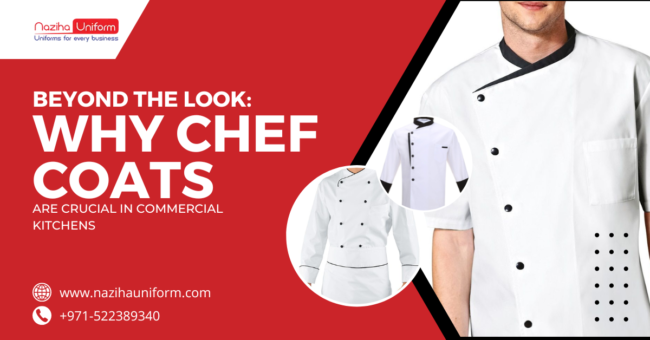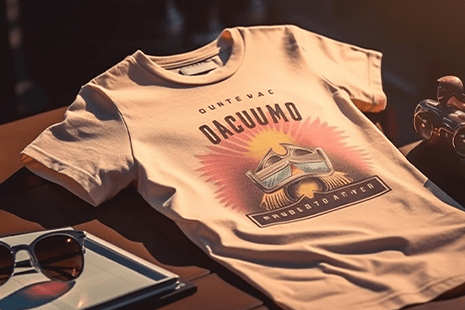Beyond the Look: Why Chef Coats Are Crucial in Commercial Kitchens
When we think of chef coats uniforms, the crisp white jacket, a symbol of culinary authority, often comes to mind. Among the various pieces of kitchen wear, the chef coat stands out not just for its iconic appearance but for its multifaceted role in ensuring safety, hygiene, and professionalism. These coats are essential equipment in a commercial kitchen, playing a vital role in safety, hygiene, and even team spirit.
Here, we delve into why chef coats are indispensable in commercial kitchens, exploring their history, functional design, and the benefits they offer to culinary professionals.
A Historical Perspective
The traditional chef coat, also known as a chef’s jacket, has its roots in the mid-19th century. It was popularized by Marie-Antoine Carême, a pioneering French chef who is often credited with establishing many of the principles of modern French cuisine. Carême believed that a clean, professional appearance was essential for chefs, leading him to design the double-breasted, white jacket that has since become a symbol of culinary excellence. Carême chose the white color not only for its professional look but also for its ability to convey cleanliness and easily show any spills or stains, indicating when a coat needs washing.
Safety First: A Culinary Shield
Commercial kitchens are bustling environments. Sharp knives, hot flames, and unexpected spills are all part of the everyday grind. A well-made chef coat acts as a barrier against these hazards.
- Heat Resistance: Many chef coats are made from thick, flame-retardant cotton or cotton blends. This material provides a layer of protection against accidental burns from splashes or oven flare-ups. Unlike regular clothing, chef coats are designed to withstand high heat without catching fire or melting, minimizing the risk of serious injury.
- Durable Fabric: Classic chef coats are typically made from thick, high-quality cotton or a cotton-polyester blend. This fabric is chosen for its durability, breathability, and ability to withstand the rigors of a busy kitchen environment, including frequent washing, which ensures the coat remains in good condition despite heavy use.
- Double-Breasted Advantage: The classic double-breasted design of chef coats isn’t just for show. It creates an extra layer of fabric over the chest and arms, offering further protection from burns and scratches. It is vital for tasks like grilling or working near open flames.
- Sleeve Length Matters: Long sleeves offer more comprehensive protection for the arms, which are particularly vulnerable to burns and scrapes from reaching into hot ovens or handling boiling liquids. Some kitchens may opt for shorter-sleeved coats during hot weather, but these should still be long enough to provide some level of protection.
- Knotted Buttons: Traditional chef coats use knotted cloth buttons instead of plastic or metal ones. These are heat-resistant and do not melt or chip, which is essential for safety in a hot kitchen. This design choice ensures the buttons remain intact and functional, even under high temperatures.
- Thermoregulation: Chefs can stay cool in the high temperatures of the kitchen thanks to the design of classic chef coats. The thick cotton material insulates the body from external heat, while the breathable fabric allows for airflow, helping to regulate body temperature and prevent overheating.
Hygiene: Keeping Things Clean
Food safety is paramount in any kitchen. Chef coats play a crucial role in maintaining a hygienic environment.
- Barrier Against Contamination: Chefs’ clothes can harbor bacteria and other contaminants from daily activities outside the kitchen. A clean chef coat acts as a barrier, preventing these contaminants from transferring to food during preparation. It is imperative to prevent the spread of foodborne illnesses.
- Easy Cleaning: The white color of traditional chef coats readily shows dirt and stains, prompting frequent washing. It helps maintain a clean and sanitary workspace. In fast-paced kitchens, spills and splatters are inevitable. A clean chef coat allows for quick stain removal, minimizing the risk of cross-contamination and ensuring the uniform remains hygienic throughout the shift.
- Designated Garment: Wearing a separate uniform discourages chefs from using their regular clothes in the kitchen, reducing the risk of foreign contaminants entering the food prep area. Street clothes can carry dust, dirt, and other allergens that can easily contaminate food. A dedicated chef coat completely prevents these contaminants from entering the kitchen.
Building a Team Identity: United by Whites
A uniform fosters a sense of unity and professionalism within a kitchen team.
- Teamwork Makes the Dream Work: A shared uniform fosters a sense of camaraderie and cooperation among chefs. It can improve communication and streamline workflow in a fast-paced kitchen environment.
- Identifying Leadership: Head chefs often wear a different style of coat, perhaps with epaulets or a different color, making them easily identifiable in the kitchen. This clear distinction allows for smoother communication and ensures everyone knows who to turn to for guidance or direction during service.
- Professional Presentation: A clean, crisp uniform creates a professional image for the kitchen staff, projecting a positive image to health inspectors and, in some cases, even customers who might get a glimpse of the bustling kitchen. A well-presented team fosters trust and confidence, both internally in the kitchen and externally with those they serve.
The Final Simmer: More Than Just a Coat
Chef coats are more than just a part of the culinary uniform; they’re a testament to the dedication to safety, hygiene, and teamwork that goes into running a successful commercial kitchen. Therefore, the next time you see a chef in their whites, keep in mind that it’s not just about dressing the part – it’s about prioritizing safety, cleanliness, and creating a well-oiled culinary machine.
As commercial kitchens continue to evolve, the chef coat remains a timeless and essential element, ensuring that chefs can perform their duties safely, efficiently, and with a sense of pride in their craft. Whether you’re a seasoned chef or an aspiring culinary student, donning a chef coat is a step towards embracing the rich heritage and demanding standards of the culinary world. To learn more about coat designs, fabrics, and bulk orders, contact Naziha Uniform, the chef coat supplier in Dubai.







